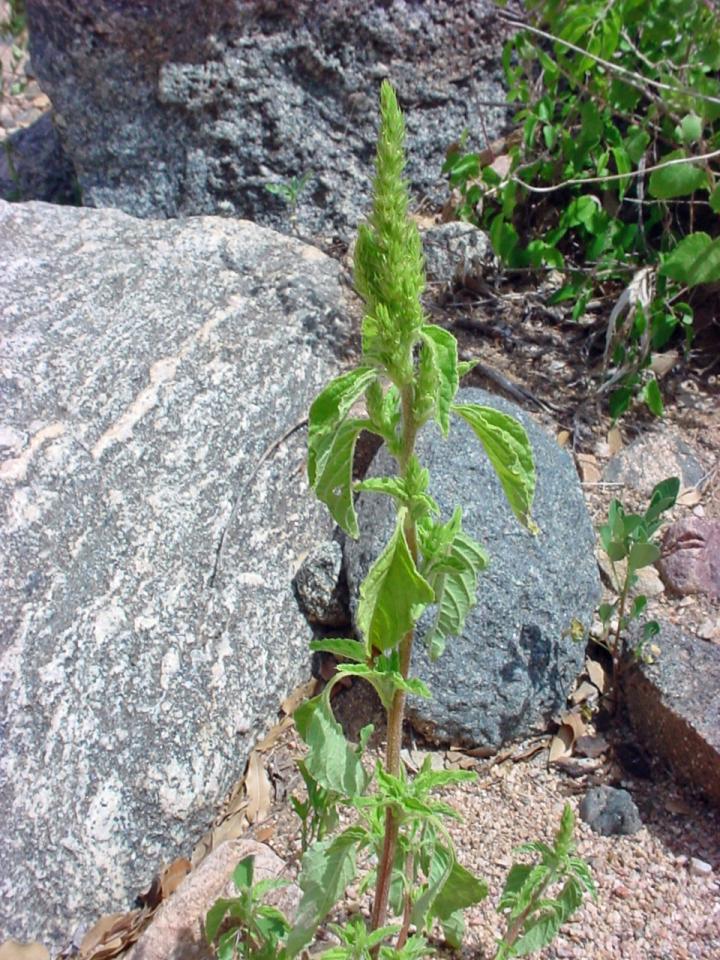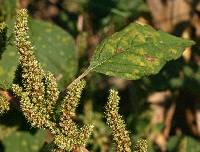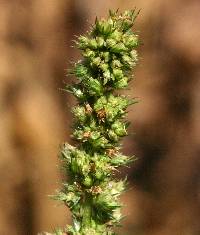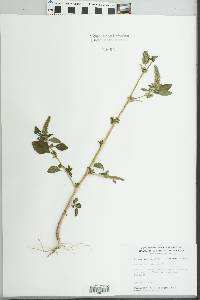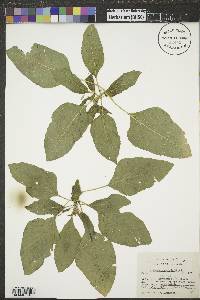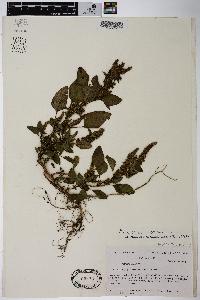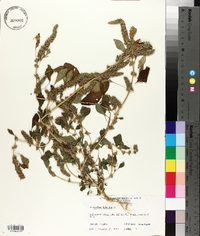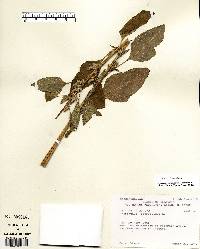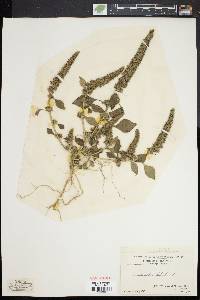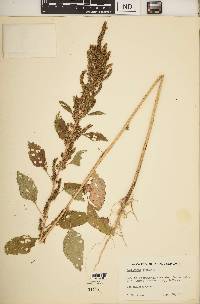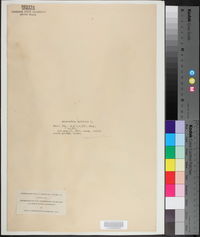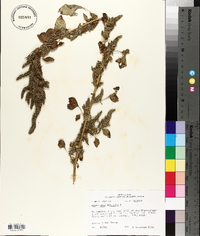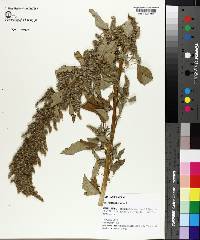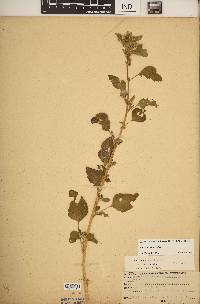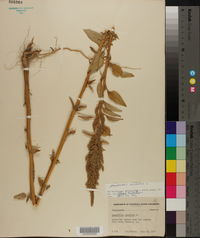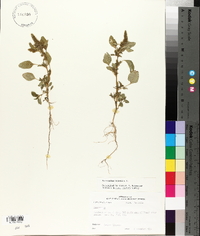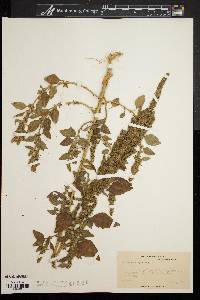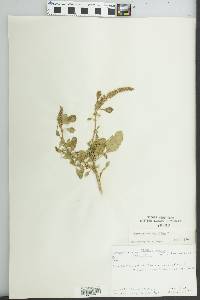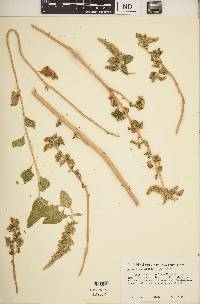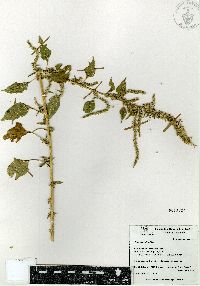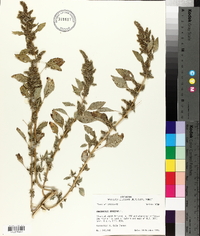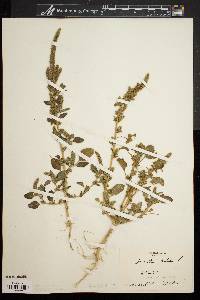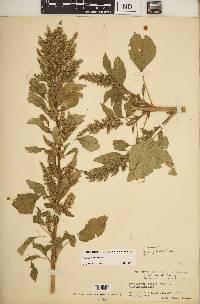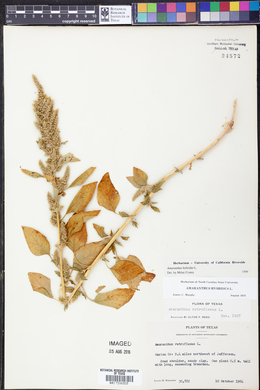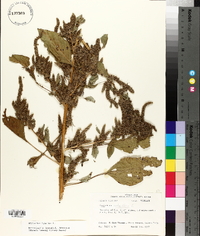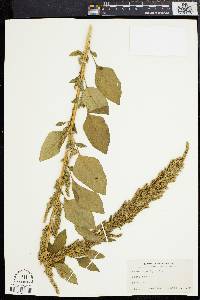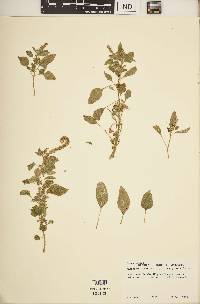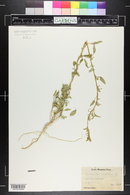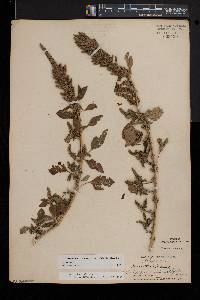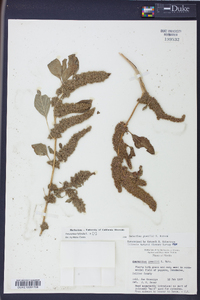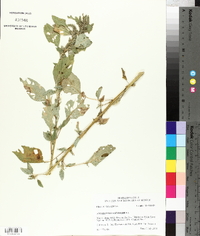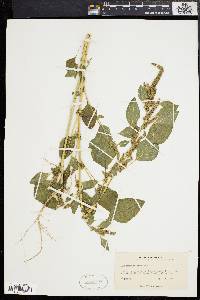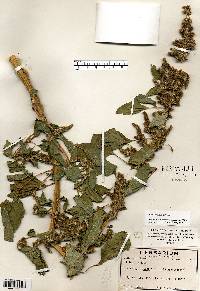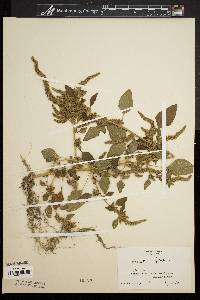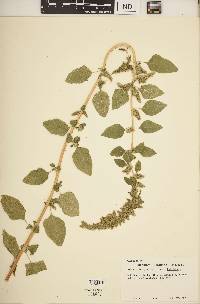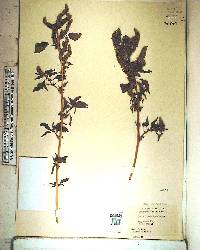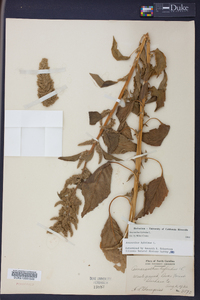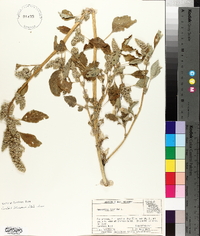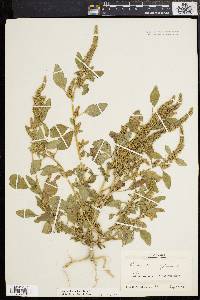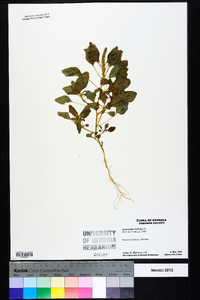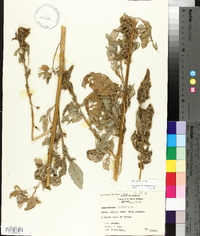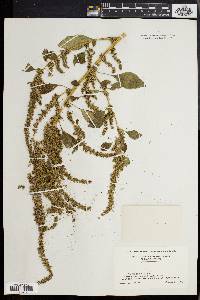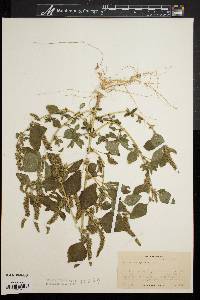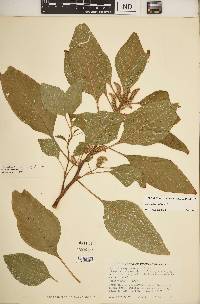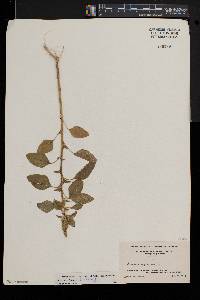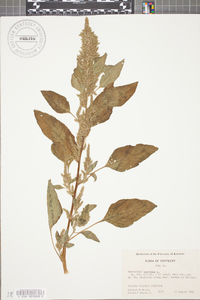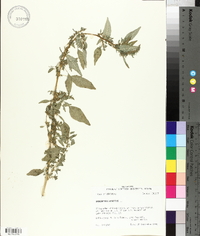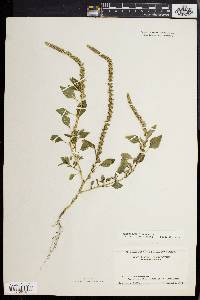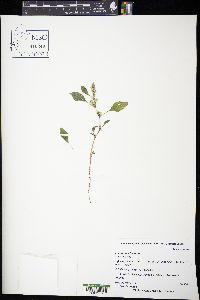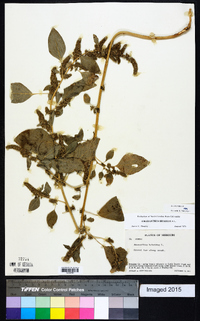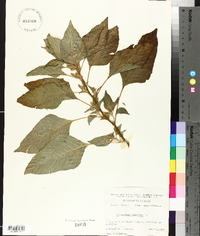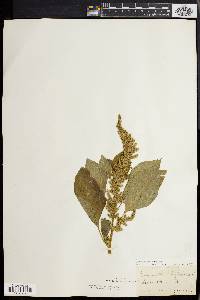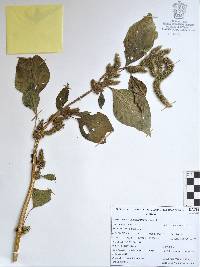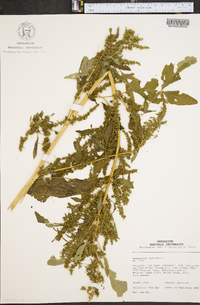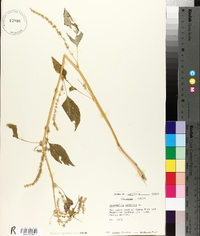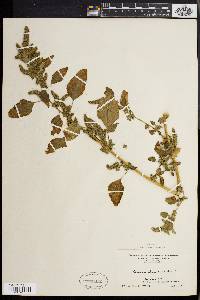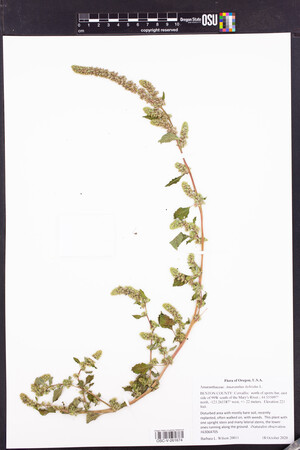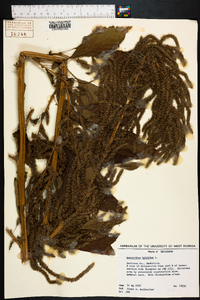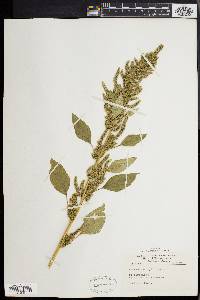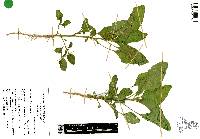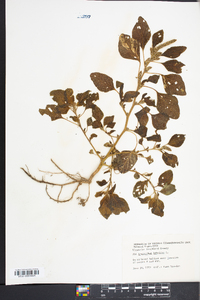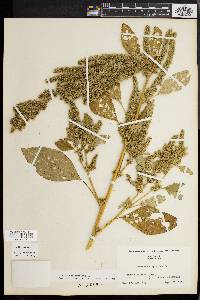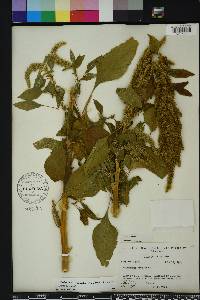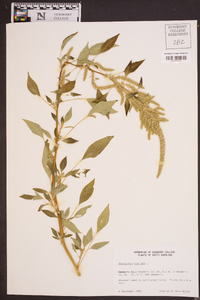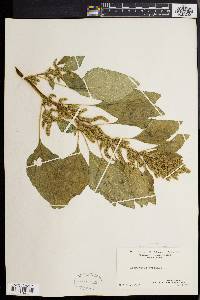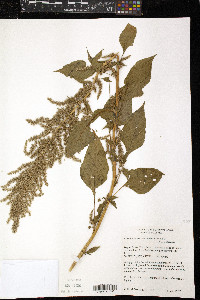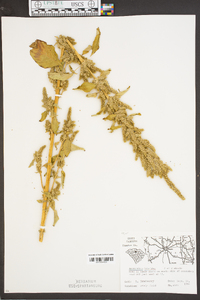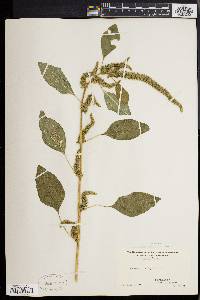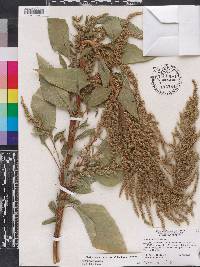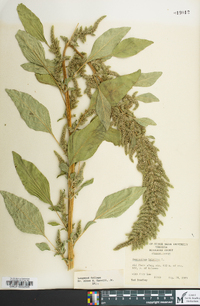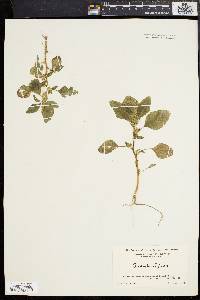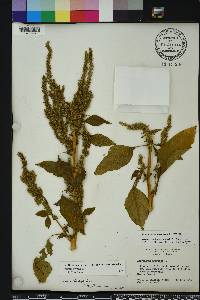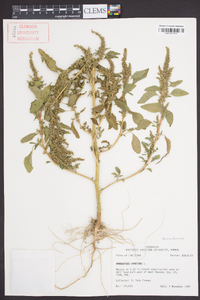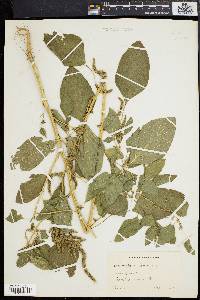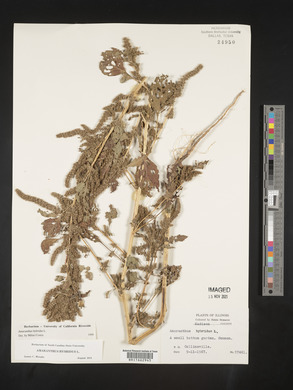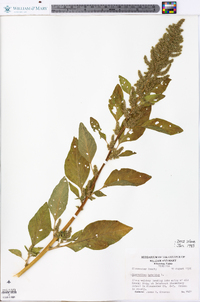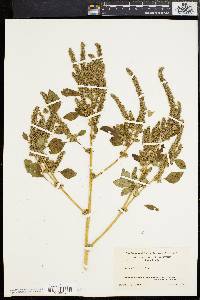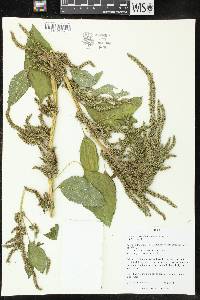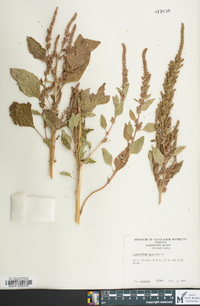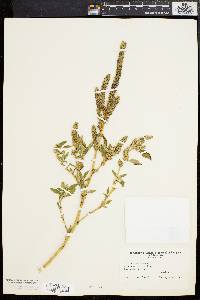
|
|
|
|
Family: Amaranthaceae
Smooth Amaranth, more... (es: quelite, bledo)
[Amaranthus chlorostachys Willd., moreAmaranthus cruentus var. patulus (Bertol.) Lambinon, Amaranthus hybridus var. patulus (Bertol.) Fiori, Amaranthus hypochondriacus var. amentaceus Suess., Amaranthus incurvatus Tim. ex Gren. & Godr., Amaranthus patulus Bertol., Amaranthus patulus var. multispiculatus Sennen, Galliaria hybrida] |
Plants glabrous or glabrescent, or distal parts of stem and branches slightly pubescent when young. Stems erect, green or sometimes reddish purple, rarely under-developed plants ascending, branched to nearly simple, 0.3-2(-2.5) m. Leaves: petiole 1/2 as long as to equaling blade; blade ovate, rhombic-ovate, or lanceolate, (2-)4-15 × (1-)2-6 cm, base cuneate to broadly cuneate, margins entire, apex acute to obtuse, with mucro. Inflorescences terminal and axillary, erect or reflexed, occasionally nodding, green or olive green, occasionally with silvery or reddish purple tint, leafless at least distally, terrminal inflorescence often slightly nodding with numerous shorter branches at base. Bracts lanceolate-linear to subulate, 2-3.5(-4) mm, subequal to or 2 times as long as tepals }, apex spinescent. Pistillate flowers: tepals 5, lanceolate to lanceolate-linear, subequal or unequal, 1.5-3 mm, membranaceous, apex acute or acuminate, gradually narrowing into aristate tip; style branches erect, shorter than body of fruit; stigmas 3. Staminate flowers at tips of inflorescences; tepals 5; stamens (4-)5. Utricles obovoid or elongate-ovoid, 1.5-2.5 mm, shorter than tepals, smooth proximally, lid verrucose or rugose, dehiscence regularly circumscissile, or rarely in some presumably hybrid forms, irregularly dehiscent or indehiscent. Seeds black to dark reddish brown, lenticular to lenticular-globose, 1-1.3 mm, smooth, shiny. Flowering summer-fall. Waste places, agricultural and fallow fields, railroads, roadsides, riverbanks, other disturbed habitats; 0-2500 m; B.C., Man., N.S., Ont., Que.; Ala., Ariz., Ark., Calif., Colo., Conn., Del., D.C., Fla., Ga., Idaho, Ill., Ind., Iowa, Kans., Ky., La., Maine, Md., Mass., Mich., Minn., Miss., Mo., Mont., Nebr., Nev., N.H., N.J., N.Mex., N.Y., N.C., N.Dak., Ohio, Okla., Pa., R.I., S.C., S.Dak., Tenn., Tex., Vt., Va., Wash., W.Va., Wis.; Mexico; West Indies; Central America; South America; widely introduced or naturalized in tropical, subtropical, and warm-temperate regions worldwide. Originally a riverside pioneer in eastern North America, now Amaranthus hybridus is extremely abundant in agricultural fields and other disturbed habitats. Related cultivated species have been reported from the flora area, including A. caudatus, A. hypochondriacus, and A. cruentus; there is no evidence that they are established; specimens identified as these species are often variants of A. hybridus. Distribution of Amaranthus hybridus in North America needs clarification because the name was misapplied to other species, notably A. powellii, and specimens of A. retroflexus, A. powellii, and A. hybridus are frequently interchangeably misidentified. Forms of A. hybridus and A. powellii with reddish inflorescences are often misidentified as escaped and hence presumably naturalized, cultivated species A. caudatus Linnaeus, A. hypochondriacus Linnaeus, and A. cruentus Linnaeus. Amaranthus hybridus is extremely variable. In particular, there are numerous North American specimens with subobtuse tepals and thick inflorescences, suggesting hybridization with A. retroflexus. In Europe such presumably hybrid forms are known as A. ×ozanonii Thellung (A. Thellung 1914-1919). A new, presumably hybridogenous taxon, Amaranthus ×tucsonensis Henrickson, was recently described from Arizona (J. Henrickson 1999). It was suggested that one of its parents is A. hybridus; the other parental species (probably a species with obtuse or spatulate tepals) remains unknown. The problem of proper taxonomic position and origin of A. ×tucsonensis needs further study.
FNA 2004, Kearney and Peebles 1969, McDougall 1973 Duration: Annual Nativity: Native Lifeform: Forb/Herb General: Annual herb, to 2 m tall or more; stems erect, simple to branching, green or sometimes reddish purple; herbage glabrous to glabrescent, or the distal parts of stem and branches slightly pubescent when young. Leaves: Alternate and petiolate, the petioles shorter than or equal to the blade; blades ovate to lanceolate, 4-15 cm long, 2-6 cm wide, dark green, thin and soft, with entire margins, cuneate bases, and mucronate tips. Flowers: Small, greenish, red, purple, or rarely white or yellowish, in robust axillary and terminal spikes, the terminal spikes longer than the axillary and with numerous shorter branches at the base. Spikes composed of many small clusters of flowers, each cluster subtended by a persistent bracts which is lanceolate-linear to subulate, 2-4 mm long and spine-tipped. Pistillate flowers have 5 tepals, these lanceolate to lanceolate-linear, subequal or unequal, 1.5-3 mm long, membranaceous, with acute or acuminate apices that narrow into awn-like tip; erect style branches; and 3 stigmas. Staminate flowers located at inflorescence tips and have 5 tepals and 5 stamens. Fruits: Obovoid utricles, 2 mm long, smooth towards the base, the lid wrinkled or warty, dehiscence circumsessile (the top opening like a lid), or rarely irregularly dehiscent or indehiscent. Seeds black to dark reddish brown, lentil-shaped to somewhat globose, 1 Ecology: Found on sandy soils on riverbanks, railroads, roadsides, agricultural and disturbed areas, below 8,500 ft (2591 m); flowers summer-fall. Distribution: Widespread across much of the United States. FNA notes that the distribution of Amaranthus hybridus in North America needs clarification because the name was misapplied to other species. Notes: Regularly confused with the quite similar A. powellii. Both species are monoeceous (male and female flowers on the same plant) annuals with ovate-lanceolate leaves and axillary and terminal inflorescences. The key differences are that A powellii has stiff, stout, erect inflorescences with bracts 4-7 mm; A. hybridus has narrower, soft, lax inflorescences with spreading branches (when branches are present) and bracts 2-4 mm. Also appears similar to A. palmeri, but that species is dioeceous (male and female flowers on separate branches) and has only terminal inflorescences. A. palmeri sometimes has glomerules of flowers in the leaf axils, but these are quite small and certainly do not constitute an entire inflorescence, as is found in the leaf axils of A. powellii and A. hybridus. Ethnobotany: An infusion of the plant used for the stomach, the astringent leaves used for profuse menstruation, and used as an ingredient in green corn medicine. Young plants boiled and dried for winter use or eaten as greens. Seeds collected and parched, ground fine, boiled, thickened, and made into balls to be eaten as dumplings, mush, or soup. Synonyms: Amaranthus chlorostachys, Amaranthus incurvatus, Amaranthus patulus Editor: LCrumbacher 2012, AHazelton 2015 Etymology: Amaranthus comes from the Greek amarantos, "unfading," referring to the long-lasting flowers, while hybirdus means mixed, hybrid. Monoecious, to 2 m, usually freely branched, scurfy- villous at least in the infl; lvs long-petioled, ovate or rhombic-ovate or lanceolate, mostly acutish, the larger ones on well developed plants often 15 cm or more; infl dull greenish or slightly reddish, not showy, terminal, lax, generally with many short, crowded lateral branches and often with nodding tip; bracts mostly 3-4 mm, slightly surpassing the sep and fr, with fairly thick, long-excurrent midrib; sep 5, those of the pistillate fls mostly 1.5-2 mm, about equaling the fr, with simple midvein, straight, acute; stamens 5; style-branches rather short, erect; fr rugose, circumscissile; seed dark brown, ca 1 mm; 2n=32. Originally native to tropical Amer., now a cosmopolitan weed. Gleason, Henry A. & Cronquist, Arthur J. 1991. Manual of vascular plants of northeastern United States and adjacent Canada. lxxv + 910 pp. ©The New York Botanical Garden. All rights reserved. Used by permission. From Flora of Indiana (1940) by Charles C. Deam Widely distributed throughout the state as a weed in gardens, cornfields, waste places, especially about habitations, and along roadsides and railroads. It prefers a rich, moist soil and is often, like the next species, a pernicious weed in cultivated grounds. ...... Indiana Coefficient of Conservatism: C = null, non-native Wetland Indicator Status: N/A Diagnostic Traits: coarse erect plant, stems glabrate; inflorescences terminal, usually green, monoecious; floral bracts subulate, 2-4 mm; pistillate tepals acute, up to 2.4 mm. |
|
|
|

